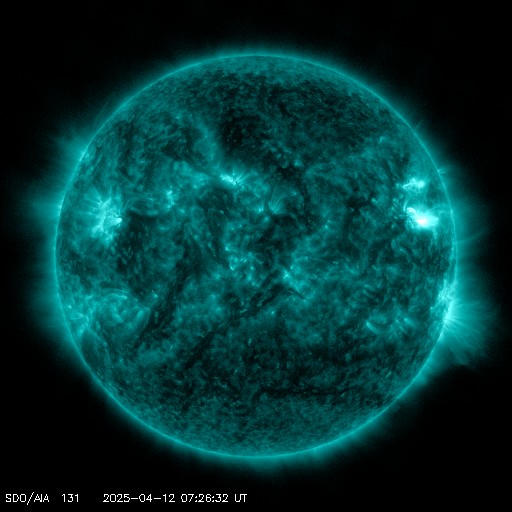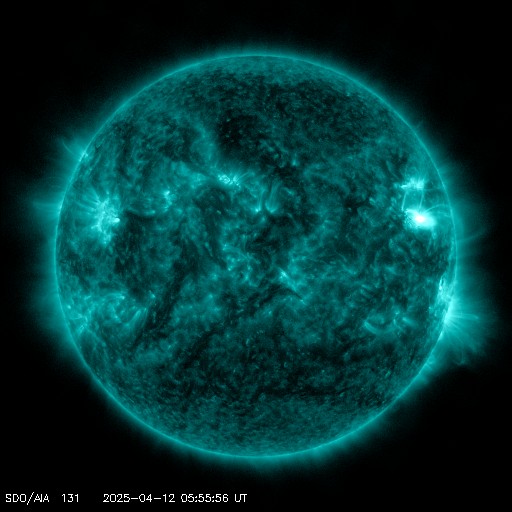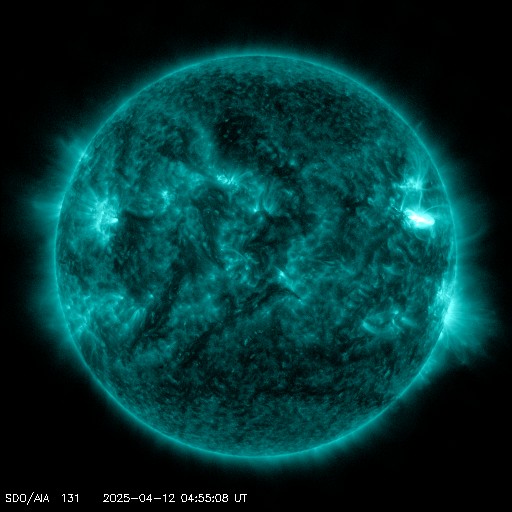Viewing archive of Monday, 23 June 2003
Solar activity report
Any mentioned solar flare in this report has a scaling factor applied by the Space Weather Prediction Center (SWPC). Because of the SWPC scaling factor, solar flares are reported as 42% smaller than for the science quality data. The scaling factor has been removed from our archived solar flare data to reflect the true physical units.
Report of Solar-Geophysical Activity 2003 Jun 23 2200 UTCPrepared by the NOAA © SWPC and processed by SpaceWeatherLive.com
Joint USAF/NOAA Report of Solar and Geophysical Activity
SDF Number 174 Issued at 2200Z on 23 Jun 2003IA. Analysis of Solar Active Regions and Activity from 22-2100Z to 23-2100Z
Solar activity was low due to a single C1/Sf flare from
Region 388 (S01W47) at 22/2148Z. Regions 386 (S07W22), 387 (N17W03),
and 388 exhibited little change this period and produced no
significant activity. A new region emerged to the south of Region
387 and was numbered 391 (N15E03).
IB. Solar Activity Forecast
Solar activity is expected to continue
at low levels. There is a slight chance for a low M-class flare
primarily from Region 386.
IIA. Geophysical Activity Summary 22-2100Z to 23-2100Z
The geomagnetic field was unsettled to active with an isolated minor
storm period between 23/03-06Z. The field was disturbed due to a
high speed coronal hole stream which peaked near 600 km/s very early
in the period and has been in slow decline since. The greater than 2
MeV electrons reached high levels today.
IIB. Geophysical Activity Forecast
The geomagnetic field is
expected to be primarily unsettled with isolated active periods.
III. Event Probabilities 24 Jun to 26 Jun
| Class M | 25% | 25% | 25% |
| Class X | 05% | 05% | 05% |
| Proton | 05% | 05% | 05% |
| PCAF | green | ||
IV. Penticton 10.7 cm Flux
Observed 23 Jun 114 Predicted 24 Jun-26 Jun 115/115/115 90 Day Mean 23 Jun 126
V. Geomagnetic A Indices
Observed Afr/Ap 22 Jun 011/016 Estimated Afr/Ap 23 Jun 020/020 Predicted Afr/Ap 24 Jun-26 Jun 012/012-012/012-010/012
VI. Geomagnetic Activity Probabilities 24 Jun to 26 Jun
| A. Middle Latitudes | |||
|---|---|---|---|
| Active | 30% | 30% | 25% |
| Minor storm | 10% | 10% | 05% |
| Major-severe storm | 05% | 05% | 01% |
| B. High Latitudes | |||
|---|---|---|---|
| Active | 35% | 35% | 30% |
| Minor storm | 15% | 15% | 10% |
| Major-severe storm | 05% | 05% | 05% |
All times in UTC
Current data suggests there is a slight possibility for aurora to appear at the following high latitude regions in the near future
Whitehorse, YT, Yellowknife, NTAnchorage, AK, Fairbanks, AK, Juneau, AK
Latest news
Latest forum messages
AR 4055 37Filaments and prominences 2CME 16Filaments and prominences (old topic) 756Unspecified geomagnetic activity 2239
More topicsSupport SpaceWeatherLive.com!
A lot of people come to SpaceWeatherLive to follow the Sun's activity or if there is aurora to be seen, but with more traffic comes higher server costs. Consider a donation if you enjoy SpaceWeatherLive so we can keep the website online!

Latest alerts
07:39 UTC - Solar flare
Moderate M1.03 flare from sunspot region 4055
07:24 UTC - Radio Blackout
Minor R1 radio blackout in progress (≥M1 - current: M1.03)
06:09 UTC - Solar flare
Moderate M1.27 flare
05:51 UTC - Radio Blackout
Minor R1 radio blackout in progress (≥M1 - current: M1.16)
05:03 UTC - Solar flare
Moderate M1.19 flare
Space weather facts
| Last X-flare | 2025/03/28 | X1.1 |
| Last M-flare | 2025/04/11 | M1.0 |
| Last geomagnetic storm | 2025/04/06 | Kp5 (G1) |
| Spotless days | |
|---|---|
| Last spotless day | 2022/06/08 |
| Monthly mean Sunspot Number | |
|---|---|
| March 2025 | 134.2 -20.4 |
| April 2025 | 139.5 +5.3 |
| Last 30 days | 136.6 -3.5 |





